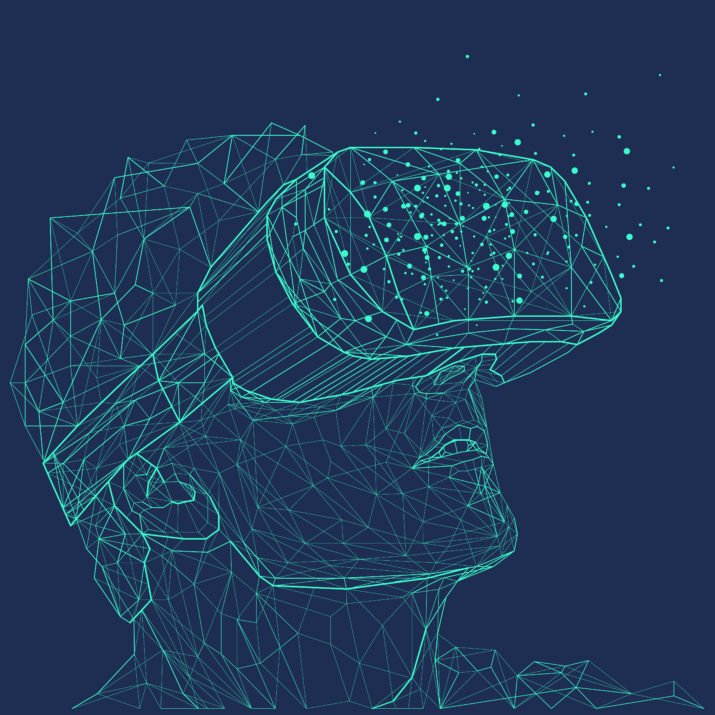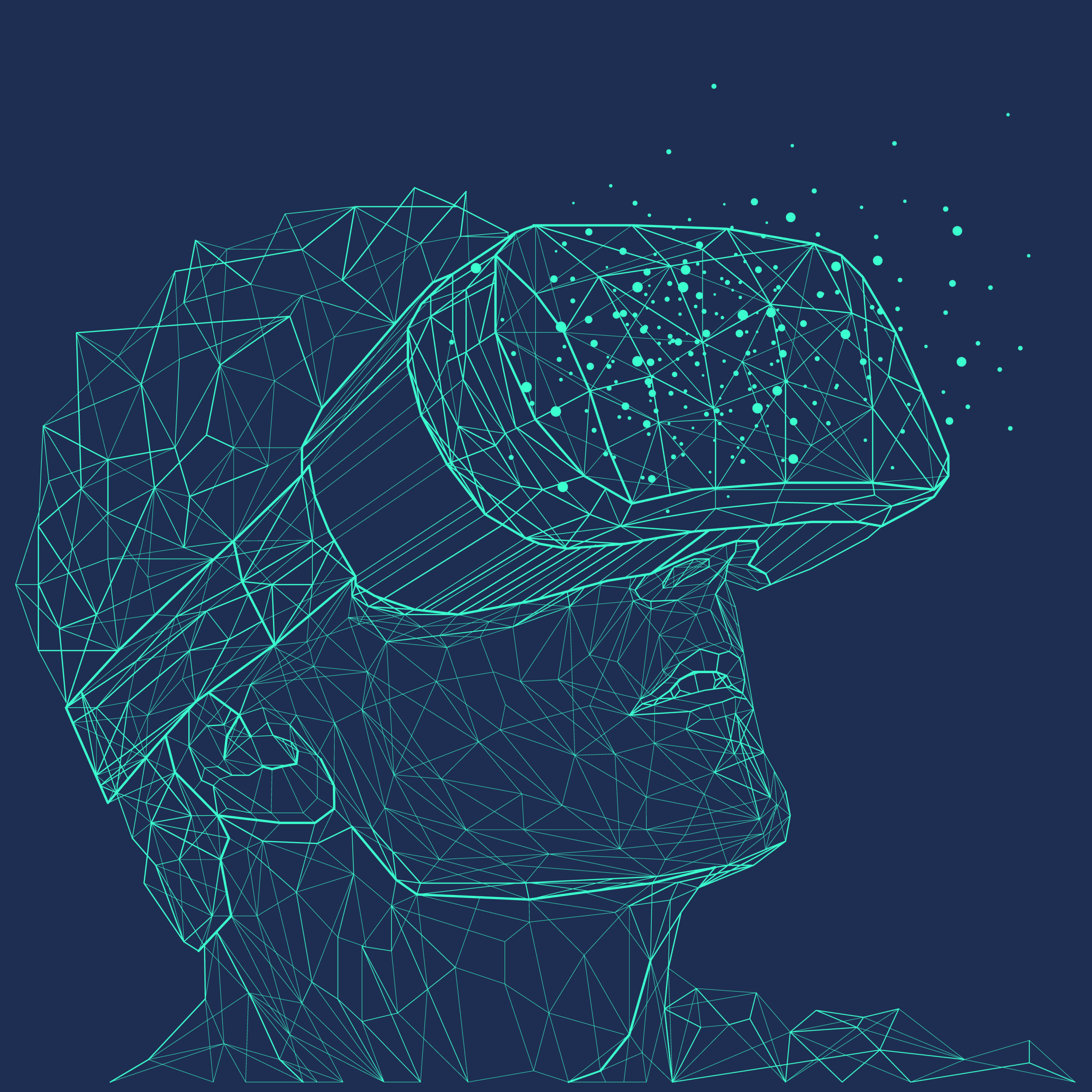

This is part of our Campus Spotlight on the University of Illinois Urbana-Champaign.
“I felt more at ease and was able to speak French without being in a classroom environment, which was pretty cool!” This is just one example of a comment made by students enrolled in a French conversation course at the University of Illinois that incorporated virtual reality (VR) this past year. As VR technology becomes less costly and more common, educators and researchers are continuously exploring how this novel technology can be used effectively to enhance learning. For language educators specifically, there are many reasons why VR could be beneficial in the classroom, including its ability to virtually bring students and instructors together in various locations and to alleviate certain negative affective learning factors (e.g., anxiety).
So, how exactly can VR benefit language learning? Is it just another fad? How complicated is it to actually use? Many educators may find themselves asking these questions in light of the recent COVID-19 pandemic that has forced a vast majority of traditional face-to-face language teaching to transition online. In a time when instructors are not able to be physically present with their students, VR can offer a more immersive way for instructors and students to meet virtually compared to other online platforms such as Zoom or Skype. Indeed, VR environments have been found to produce higher degrees of presence in learners[1]—the feeling of physically being in the virtual environment even though you are not—which can lead to increased engagement and learning. VR could therefore be a productive way for instructors to bridge the physical gap between themselves and students in current times when face-to-face learning is not possible.
However, the benefits of VR for language learning go beyond just being able to bring learners together in the same virtual location when they cannot physically do so. It can also be used to create an alternative setting in which instructors and learners can practice the target language. For example, certain VR platforms, such as Oculus, allow users to meet in various locations and share photos and videos that they can then discuss. VR applications such as Google Earth VR and Wander allow users to virtually walk around cities and monuments from around the world and view them from a similar perspective as if they were there in real life. These applications also allow users to explore these locations in groups together. This feature provides the opportunity for students to practice the target language by giving each other tours and descriptions of various places while viewing them simultaneously.
Moreover, while it is not possible to replace the richness that accompanies traveling to another country, instructors can use VR to share important monuments and cultural aspects with their students. For instance, what better way to teach French learners about important monuments in Paris, such as Notre Dame or the Louvre, than let them take a 360° tour of them themselves? VR could also be a way for learners who do not have the financial means or time to go abroad (e.g., non-traditional working students with families or students who wonder if study abroad is a frivolous expense that they cannot afford) to explore a target culture and country.
Another benefit of VR includes the fact that students can use it to practice languages on their own, while still receiving feedback. Certain VR applications, such as ImmerseMe and Mondly allow learners to do just that. Both ImmerseMe and Mondly offer VR lessons in a variety of languages – including German, Spanish, French, English, Chinese, Italian, and Arabic. For both programs, learners can choose various environments and scenarios in which to practice their language of choice. For example, a student wanting to improve their French could practice ordering a croissant at a boulangerie or discussing their weekend plans with a friend. The variety of topics and situations that learners can practice vary depending on the level they decide to work on—ranging from beginner to advanced. What makes these types of programs even more beneficial is their ability to give immediate personalized feedback to students, specifically on pronunciation and grammatical mistakes. This is particularly important, since it allows students to practice and improve their language skills in private before having to face native speakers, which can foster confidence and reduce the foreign language anxiety that often accompanies speaking.
VR’s ability to lower foreign language anxiety has been one of the widely cited potential benefits of using it for language learning. However, research so far has not actually examined how or why VR leads to lower anxiety and whether or not this impacts oral performance in a foreign language. The study that I am conducting at UIUC under the supervision of Dr. Aurore Mroz, who has also researched virtual environments and language learning, aims to do exactly that by examining whether and how VR impacts French learners’ anxiety and oral production skills in French. However, instead of meeting in a pre-programmed VR environment such as ImmerseMe or Mondly, students meet in a social VR network called vTime XR[2], where they can then interact in a variety of locations and freely converse on any topic. Preliminary results reveal that students are indeed less anxious interacting in vTime compared to a traditional classroom setting and that their oral production benefits from this lower anxiety.
However, while the benefits of VR have been widely cited in Computer Assisted Language Learning research, what does it actually take to integrate VR into a language course? Well, for starters, instructors wanting to use VR must first gain access to VR equipment. Today, there is a variety of VR headsets to choose from, ranging from cheaper options such as Google Cardboard to more expensive options such as the HTC Vive. However, those looking to purchase VR equipment will get what they pay for. While Google cardboard and other lower quality VR headsets are attractive due to their price-point, they can result in less immersive experiences and lower quality images. Thankfully though, for those who do not want to purchase their own VR headsets, it is becoming more common for university campuses to have VR labs, which provide access to higher quality equipment that instructors and researchers can use with their students. For example, the University of Illinois has several VR labs around campus that are eager to work with faculty and graduate students conducting research on VR.
The next step after finding the VR equipment to use with a course or project is making sure that the students are properly trained to use it. While many people assume that university students will have no problem picking up new technology, this is not always the case. Especially when they have never worked with VR before. Proper training of how to use the headsets, controllers, and any accompanying VR applications will result in less frustration when using the technology and a higher sense of immersion for students. However, even with proper training, it is important for instructors to be prepared for any problems they may encounter along the way. VR headsets do not always function as they should, batteries in controllers can stop working, students can have motion sickness, etc. The list of possible problems that can arise is not insignificant. While it can seem overwhelming to anticipate all of these issues, ensuring that students and instructors using the technology are properly trained will help to minimize them.
Ultimately, VR appears to be an extremely beneficial tool for language learning, although the best methods for integrating it are still very much under exploration. This technology allows instructors to share a target language and culture with students in a way that was not possible before without traveling abroad. It also gives learners alternative low-stress environments in which they can practice and improve their own language skills. While scholars are still very much examining how to best use VR for language learning, research thus far has found that proper training of instructors and students can be beneficial by alleviating some of the technological issues and frustrations that can arise when using VR in the language classroom.
Tricia Thrasher is a fourth-year PhD student in the department of French and Italian at the University of Illinois at Urbana-Champaign. She is pursuing a concentration in Second Language Acquisition and Teacher Education. Her research focuses on the use of Virtual Reality to lower foreign language anxiety and improve oral production in second-language French learners.
References:
[1] Witmer, Bob & Singer, Michael. “Measuring Presence in Virtual Environments: A Presence Questionnaire.” Presence, no. 7 (1998): 225-240.
[2] vTime XR was developed by a British virtual and augmented reality company called vTime Limited
Photo: Low poly wire outline geometric illustration. Virtual reality glasses. Connection abstract vector structure
Published on August 4, 2020.




